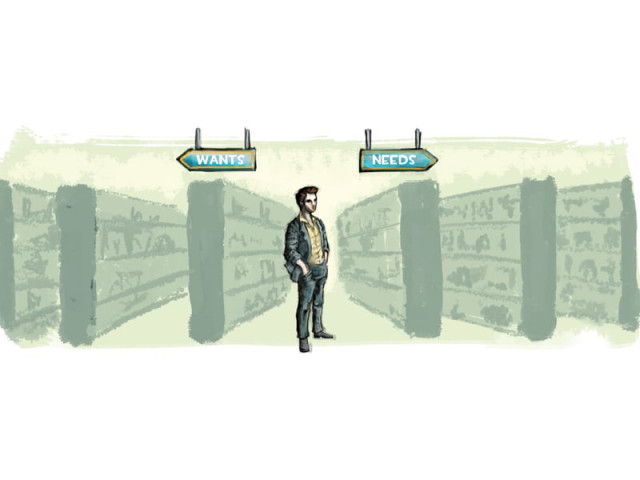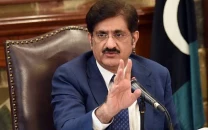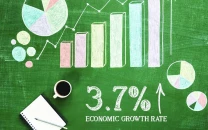Forget roti kapra aur makaan: Why lifestyle products, not necessities, are driving inflation
CPI indicates the average Pakistani consumer is spending more on improving his existing lifestyle .

The real source of inflation in Pakistan is not the increase in these three essential groups, but rather other lifestyle related items. ILLUSTRATION: JAMAL KHURSHID
Roti, kapra aur makaan, or food, clothing and shelter, is the political slogan of Pakistan. Contrary to popular belief, these three basic needs have contributed least to inflation. In fact, lifestyle changes have been driving recent inflation.
In national accounts of Pakistan, roti is an approximation for food. Kapra is synonymous with clothing and footwear, and makaan can be taken as housing, water, electricity, gas and other fuels. These three areas take up 34.8%, 7.6% and 29.4% respectively of all spending in Pakistan.
According to the Pakistan Economic Survey 2012-13, the Consumer Price Index (CPI) witnessed an annual increase of 7.8% in the fiscal year 2012-13. Interestingly, inflation in prices of recreation items was the highest at 18.3%, followed by alcoholic beverages and tobacco at 17.5% and clothing and footwear at 14.7%. Prices of food and housing related items increased by only 6.6% and 4.1% respectively.

So while food and housing may constitute a large chunk of spending, their prices have remained relatively stable compared to other goods. In fact, food items only contributed 2.7% of inflation in 2012-13. Similarly, housing related items contributed only 3.7% of inflation in the same period. While clothing and footwear had high inflation, their relatively low share of overall spending also means the impact was not that significant.
In fact, the real source of inflation in Pakistan is not the increase in these three essential groups, but rather other lifestyle related items.
The data suggests that the average consumer’s lifestyle is improving and is spending more on lifestyle products. Those who suggest that ordinary people are being hit by inflation must keep in mind that for a vast majority of the population, particularly in urban areas, the choice is between an improved lifestyle, or spending more of their disposable income, and maintaining a certain lifestyle, or saving more of their disposable income. It seems most people are voluntarily choosing the former, which some people have started calling as lifestyle inflation.
This lifestyle shift is expected in most emerging markets, and Pakistan is no exception. Because of increasing consumer awareness and improved lifestyle products, consumers are spending a higher share of their disposable income on lifestyle products.
This is particularly evident in the telecommunications industry. For example, people from all income brackets tend to change mobile handsets frequently, even if there is no real need to do so.
Lifestyle shifts can be seen in other areas too. More households in Pakistan now send their children to private schools, prefer to use private health facilities, and have started eating out more than they used to in the past. All these activities are captured in the CPI, and not surprisingly their contribution to inflation is significant.
Also to take into account is the qualitative aspect of inflation. As the quality of lifestyle goods and services improve, their prices rise. While one may be paying more now for a given quantity of a good or service, it may be the case that the increase in price is due to improved quality of the good or service.
For instance, someone may be paying more for a haircut today than five years ago. While part of the increase in price can be explained by an increase in the general price level, it is possible that the person has started going to a more expensive hairstylist rather than visiting a traditional barber. It is also equally possible that the same barbershop has improved the quality of its services, revising its price list upwards.
The crux of the matter is that while in Pakistan, the general public is creating a lot of fuss about inflation the price hike may not entirely be about roti, kapra aur makaan. It may be more to do with lifestyle changes and a strong urge on the part of middle-income groups to improve the quality and quantity of the goods and services they wish to consume.
The writer is an economist and a PhD from Cambridge University.
Published in The Express Tribune, July 29th, 2013.
Like Business on Facebook, follow @TribuneBiz on Twitter to stay informed and join in the conversation.



















COMMENTS
Comments are moderated and generally will be posted if they are on-topic and not abusive.
For more information, please see our Comments FAQ